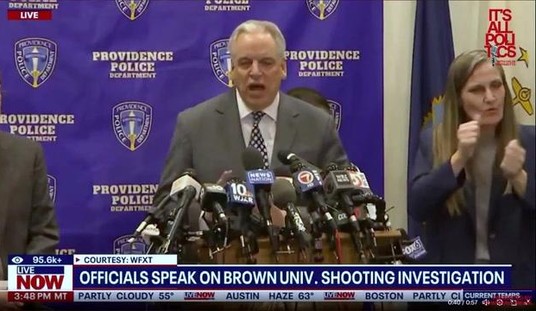One of my favorite characters from science fiction is Dr. Arthur Carrington from the 1951 movie The Thing from Another World. Carrington was the archetype of a scientist so narrowly intelligent that he was, in the broader sense, an idiot. The character was probably modeled after the nuclear scientists of the early Atomic Age who in their compulsive inquiries brought the post-WW2 world to the brink of Armaggeddon.
In the movie, after a spacecraft is detected by radar crashing near a U.S. arctic outpost, a recovery team brings back a hideous frozen Thing to base. Carrington — you guessed it — thinks this is just great. He can’t wait to revive it.
Dr. Arthur Carrington : There are no enemies in science, only phenomena to be studied. …
No pleasure, no pain… no emotion, no heart. Our superior in every way. …
Ned “Scotty” Scott : What can we learn from that thing except a quicker way to die?
Dr. Arthur Carrington : It doesn’t matter what happens to us. Nothing counts except for our thinking. We thought our way into nature. We split the atom.
Eddie : Yes, and that sure made the world happy, didn’t it? …
Dr. Arthur Carrington : Knowledge is more important than life.
It goes on a rampage, but even when the Thing is on the verge of annihilating the whole outpost, Carrington protects it by sabotaging the instinctive human defenses. He tries to reason with it. “I’m your friend! I have no weapons! I’m your friend! You’re wiser than I! You must understand what I’m trying to tell you! Don’t go farther! They’ll kill you! They think you’ll harm us! But I want to know you, to help you! Believe that! You’re wiser than anything on earth! Use that intelligence! Look and know what I’m telling you! I’m not your enemy! I’m a scientist who’s trying…!” Carrington’s words are cut short by the Thing’s bone-crushing swipe. There is no appeal: “no emotion, no heart. Our superior in every way.”
If all of this sounds familiar it’s because it resembles the script that ought to be written for what should be a forthcoming movie: The Thing from the NIH. Vanity Fair reports that the NIH now admits it was funding gain-of-function research at Wuhan. While no one is claiming the research led to the COVID-19 monster virus, they were in fact trying to create a monster virus.
On Wednesday, the NIH sent a letter to members of the House Committee on Energy and Commerce that acknowledged two facts. One was that EcoHealth Alliance, a New York City–based nonprofit that partners with far-flung laboratories to research and prevent the outbreak of emerging diseases, did indeed enhance a bat coronavirus to become potentially more infectious to humans, which the NIH letter described as an “unexpected result” of the research it funded that was carried out in partnership with the Wuhan Institute of Virology. The second was that EcoHealth Alliance violated the terms of its grant conditions stipulating that it had to report if its research increased the viral growth of a pathogen by tenfold.
The biggest defender of gain-of-function research has been the estimable Dr. Anthony Fauci. “You gotta go where the action is,” Fauci explained…as he faced questions about the increasingly popular lab-origin theory from Republicans during testimony before a subcommittee of the House Appropriations Committee.
The action, in this case, was SARS-CoV-1, a coronavirus that originated in bats in the Chinese province of Guangdong in 2002 and then jumped to humans. … “It would have been almost a dereliction of our duty if we didn’t study this,” Fauci said on Tuesday, meaning that cooperation with Chinese authorities was necessary. …
At the time of the SARS outbreak, Fauci was head of the National Institute of Allergy and Infectious Diseases, which is part of the National Institutes of Health (he retains that position to this day). NIH Director Francis Collins testified on Tuesday as well. They both defended the NIH funding of a not-for-profit organization called EcoHealth Alliance, which has worked closely with the Wuhan Institute of Virology to gain understanding about how coronaviruses emerge from bats.
While The Thing from Another World was just a movie, it raised very real policy issues. If today we no longer have atmospheric nuclear tests or impose any restrictions on biological research at all, it is because the world as a whole decided on the basis of the near disasters of the Cold War that Carrington was wrong: knowledge is not always more important than life. Risk management comes into the equation and the right balance must be decided by everyman because everyman’s life is at stake when confronting the things from the unknown world. Some things are too important to be left to the god-men experts. And in the old movie — spoiler alert — it was everyman, with the Carringtons in support, who eventually saved earth from the Thing.
Ned “Scotty” Scott : All right, fellas, here’s your story: North Pole, November Third, Ned Scott reporting. One of the world’s greatest battles was fought and won today by the human race. Here at the top of the world a handful of American soldiers and civilians met the first invasion from another planet. A man by the name of Noah once saved our world with an ark of wood. Here at the North Pole, a few men performed a similar service with an arc of electricity. The flying saucer which landed here and its pilot have been destroyed, but not without causalities among our own meager forces. I would like to bring to the microphone some of the men responsible for our success… but as Senior Air force officer Captain Hendry is attending to demands over and above the call of duty… Doctor Carrington, the leader of the scientific expedition, is recovering from wounds received in the battle.
Eddie : [Softly] Good for you, Scotty.
Ned “Scotty” Scott : And now before giving you the details of the battle, I bring you a warning: Everyone of you listening to my voice, tell the world, tell this to everybody wherever they are. Watch the skies. Everywhere. Keep looking. Keep watching the skies.
Maybe there’s a moral here. Perhaps the lesson is to be vigilant. COVID-19 will not be the last man-made monster. There will be other Things, other Carringtons. But so long as there’s us — not just the fact-checkers — there’s a chance: a small one but still a chance. So keep looking. Keep watching the skies.
Books: The Last Duel by Eric Jager. In 1386, a few days after Christmas, a massive crowd gathered at a Paris monastery to watch two men fight a duel to the death. A trial by combat to prove which man’s cause was right in God’s sight. The dramatic story of the knight, the squire, and the lady unfolds during the tumultuous fourteenth century. A time of war, plague, and anarchy, as well as of honor, chivalry, and courtly love. The notorious quarrel appears in many histories of France, but no writer has recounted it in full, until now.










Join the conversation as a VIP Member